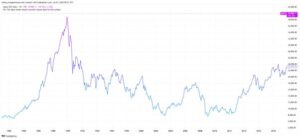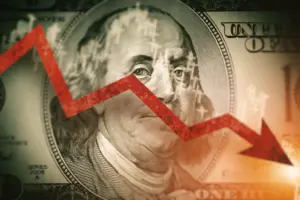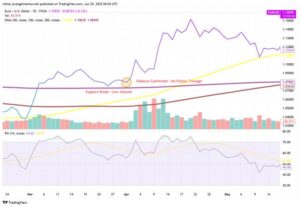Today's economic focus is on two key events: the European Central Bank (ECB) monetary policy statement and the U.S. PPI data release. These events are expected to significantly impact the forex market, particularly the euro and the dollar. Below is a detailed analysis.
ECB Monetary Policy Statement and Press Conference
The ECB is expected to announce a rate cut today, reducing the deposit rate from 3.75% to 3.5%. The primary reason behind this anticipated move is the ongoing economic slowdown in the eurozone, especially in Germany, where recession risks are high. Additionally, inflationary pressure has eased, and the eurozone's CPI is approaching the ECB’s 2% target, giving the central bank more room to adopt a looser monetary policy.
ECB President Christine Lagarde will hold a press conference after the policy announcement. Her comments will provide key insights into the future direction of ECB policy. Investors will be watching closely to see if Lagarde signals further rate cuts or additional measures to stimulate the economy. If she adopts a more dovish tone, indicating that the ECB is ready to continue easing policy, the euro is likely to weaken further against the dollar.
Even though the market has partially priced in the rate cut, the ECB's actual decision and Lagarde's tone during the press conference will still influence the market. If the rate cut is more aggressive than expected or if Lagarde hints at more easing measures in the future, the euro could face additional downward pressure, particularly against the dollar. On the other hand, if her comments are more cautious, suggesting that this rate cut is a one-off response to short-term challenges, the euro may experience a short-term rebound.
Overall, the euro’s trajectory will largely depend on the ECB’s actions today. A weaker euro could affect European trade, while also influencing other global currencies linked to the eurozone.
U.S. PPI Data and Its Relation to CPI
In the U.S., the Producer Price Index (PPI) data for August will be released later today. PPI tracks changes in the prices producers pay for goods and services, providing insight into inflation at the production level. This follows yesterday's release of the U.S. Consumer Price Index (CPI), which showed inflation easing, with the annual rate at 2.5%, slightly below the expected 2.6%. However, core CPI, which excludes food and energy, rose by 0.3%, higher than the forecast of 0.2%.
This unexpected rise in core CPI has significantly reduced the likelihood of a large rate cut by the Federal Reserve next week. Prior to the CPI release, many market participants were expecting a 50 basis point cut, but with inflation still showing signs of persistence, this now seems unlikely.
Today’s PPI data will offer additional clues regarding inflationary pressures in the U.S. economy. If PPI comes in higher than expected, it would suggest that inflationary pressures remain strong, making it less likely that the Fed will pursue aggressive rate cuts. This could further strengthen the dollar against other currencies, particularly the euro and yen. A higher PPI could also mean that producers are facing rising costs, which may eventually be passed on to consumers, keeping consumer prices elevated and delaying any substantial monetary easing by the Fed.
Conversely, if PPI comes in lower and aligns with the downward trend in headline CPI, it could ease concerns about persistent inflation, raising hopes that the Fed may resume rate cuts in the near future. This would likely weaken the dollar and boost riskier assets like equities and commodities. Moreover, a softer PPI reading could help fuel a rally in gold, as lower inflationary pressures would strengthen the case for Fed rate cuts, which typically benefit the yellow metal.
Market Impact Summary
The ECB’s monetary policy statement and the U.S. PPI data will likely trigger significant volatility in the forex and precious metals markets today.
-
Euro Performance: If the ECB cuts rates more than expected and President Lagarde hints at further easing, the euro may weaken significantly against the dollar. Conversely, if the ECB is more cautious, the euro might experience a short-term recovery.
-
Dollar Movement: If U.S. PPI data shows higher-than-expected inflation, the dollar could strengthen further, especially given the recent CPI data. This would put pressure on other major currencies and gold.
-
Precious Metals: A stronger dollar would likely suppress gold prices, especially if inflation concerns grow. On the other hand, if PPI indicates softer inflation, gold could rally as markets anticipate future Fed rate cuts.
In conclusion, today’s ECB decision and U.S. PPI data will play a pivotal role in shaping market sentiment. Investors should closely monitor these releases to make informed decisions, particularly in the forex and precious metals markets.





